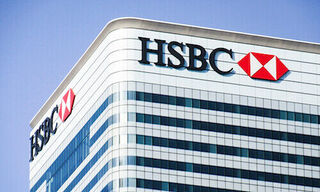The federal government and supervisory authorities have forced UBS to take over Credit Suisse. In doing so it saddled UBS with several potential pitfalls. But hidden treasures also await the buyer.
It was hard to believe UBS chairman Colm Kelleher when he said on March 19 the takeover of Credit Suisse offered «tremendous opportunities.» The extraordinary session of the Swiss parliament over the past few days added fuel to such doubts. No fewer than ten proposals were adopted with twice as many motions further submitted, marking the start of significantly stricter regulation of the largest Swiss bank.
Huge Risks?
If the legal risks that UBS is assuming from Credit Suisse are added to the unknowns and costs of a four-year integration, observers have to conclude UBS has taken on considerable risk with the merger. Some clarity on the issue may be forthcoming soon. The Swiss Financial Market Supervisory Authority (Finma) wants to wrap up enforcement proceedings on the Archegos debacle.
There is another view of the deal, at least on paper. UBS and its top management around Kelleher and new CEO Sergio Ermotti have surprising treasures waiting for them from their acquisition.
This is suggested by an analysis JP Morgan recently completed on UBS. The American bank is acting as an investment banking advisor to UBS in the takeover. These are the most surprising projections:
1. A New Julius Baer Every Three Years
According to the analysis, the acquisition of Credit Suisse will create a wealth management powerhouse. Once the integration is completed in 2027, two-thirds of the combined entities' pre-tax profit, estimated at seven billion dollars, would come from wealth management. In the business with wealthy private clients, the combined group would be in a position to collect $150 billion in new money every year. That much new money flowing in would create equivalent to a new Bank Julius Baer every three years measured by client assets, the analysts write. These figures would make many a private bank CEO in Switzerland giddy.
2. Costs Can be Squeezed More Easily than Expected
The team around lead analyst Kian Abouhossein calculates that UBS's savings target of eight billion dollars by 2027 is not a very challenging one. Credit Suisse's investment bank alone generates annual costs of seven billion dollars, and UBS wants to wind down this business. The costs of job cuts are also likely to be limited. Voluntary staff turnover at UBS was 13 percent last year and slightly higher for Credit Suisse at 15 percent.
The combined bank is expected to incur legal risk costs of around five billion dollars by 2027. Overall, analysts expect net restructuring costs of $8.2 billion, so UBS could manage quite a precision landing between savings and expenses.
3. Swiss business is worth billions.
According to the calculations, Credit Suisse's Swiss business is expected to contribute about a third of the combined bank's pre-tax profits from 2027. However, UBS may decide to share this revenue with the public for several reasons. With an initial public offering of Credit Suisse Switzerland, UBS will reap at least ten billion dollars, according to JP Morgan. The scenario has played out before. In 2015, then-CEO Tidjane Thiam planned to take the unit that is now the Swiss Bank, in a partial IPO on Switzerland's SIX stock exchange.
4. Guardrail Against Setbacks
By acquiring Credit Suisse for three billion francs, when it was worth around 7.4 billion on the stock exchange, UBS created a cushion worth billions against setbacks from the start. Add to that extensive guarantees from the federal government and supervisory authorities worth at least 25 billion francs. This is due to the mandatory convertible bonds of Credit Suisse of 15.8 billion francs triggered by Finma, and direct government guarantees of at least nine billion francs.
Thanks to the writedown of mandatory AT1 convertibles, UBS will save interest costs incurred by Credit Suisse, a savings analysts estimate at one billion dollars per year.
5. Enormous Reservoir of Deferred Claims
Deferred tax assets arising in the US business are a highly complex factor, but UBS has repeatedly drawn from this resource in the past and used it to boost its net profit. In the future, the bank could continue to capitalize on such assets to smooth out any setbacks from the merger. With the sale of Credit Suisse's US business units, such a capitalization might even become necessary, JP Morgan analysts believe.
According to their calculations, Credit Suisse had no less than $60 billion in net tax loss carryforwards at the end of last year, but the bank's management hardly used any of it. At UBS, the tax loss carryforwards at the same time amounted to 32 billion dollars.


























